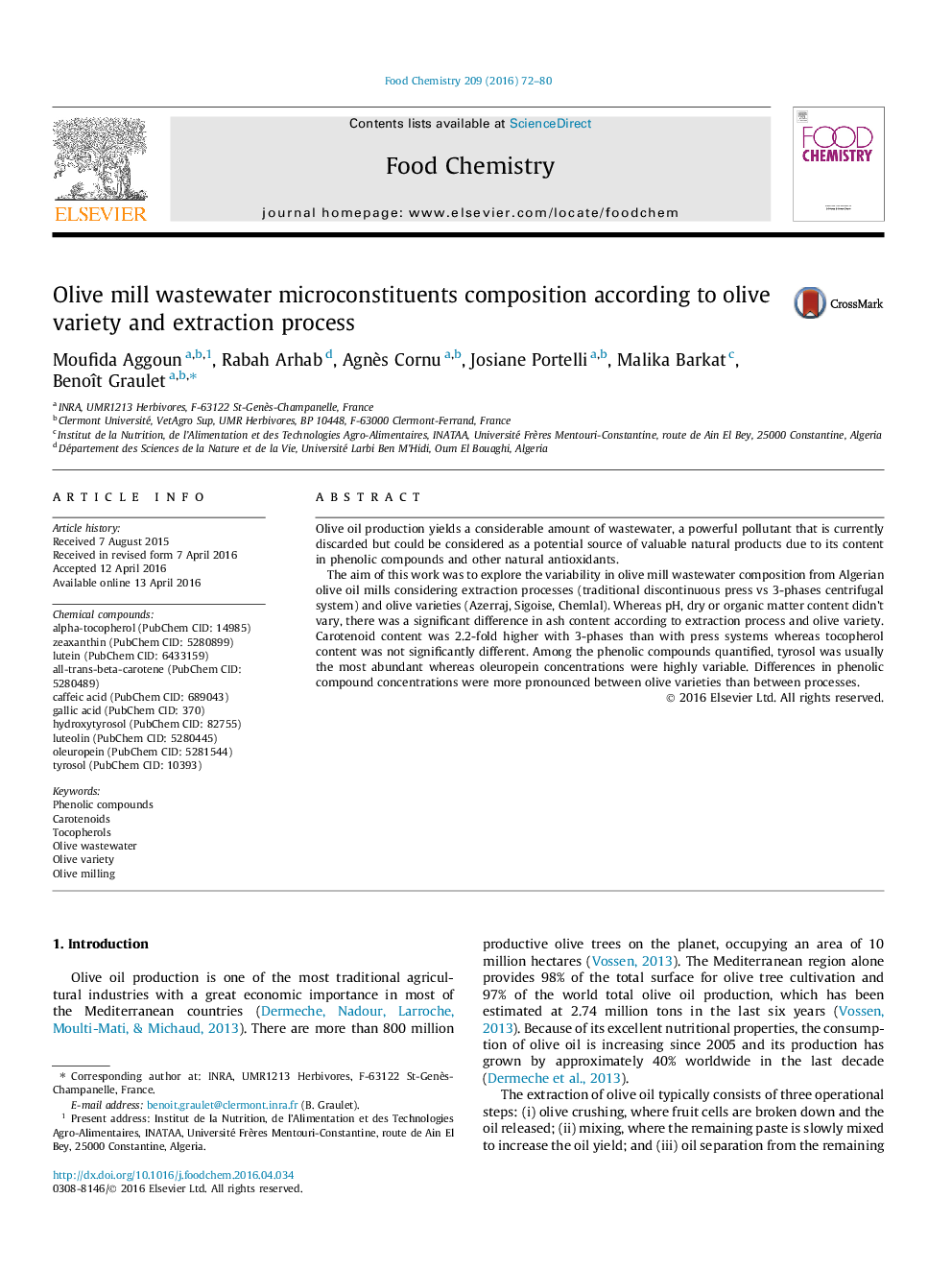| Article ID | Journal | Published Year | Pages | File Type |
|---|---|---|---|---|
| 1183125 | Food Chemistry | 2016 | 9 Pages |
•Phenolic compounds of olive mill wastewaters could let discriminate their origin.•Carotenoid content varies according to olive milling process, but tocopherol not.•Ash content is both sensitive to olive variety and milling process.•pH value is acidic but seems relatively stable in olive mill wastewaters.
Olive oil production yields a considerable amount of wastewater, a powerful pollutant that is currently discarded but could be considered as a potential source of valuable natural products due to its content in phenolic compounds and other natural antioxidants.The aim of this work was to explore the variability in olive mill wastewater composition from Algerian olive oil mills considering extraction processes (traditional discontinuous press vs 3-phases centrifugal system) and olive varieties (Azerraj, Sigoise, Chemlal). Whereas pH, dry or organic matter content didn’t vary, there was a significant difference in ash content according to extraction process and olive variety. Carotenoid content was 2.2-fold higher with 3-phases than with press systems whereas tocopherol content was not significantly different. Among the phenolic compounds quantified, tyrosol was usually the most abundant whereas oleuropein concentrations were highly variable. Differences in phenolic compound concentrations were more pronounced between olive varieties than between processes.
